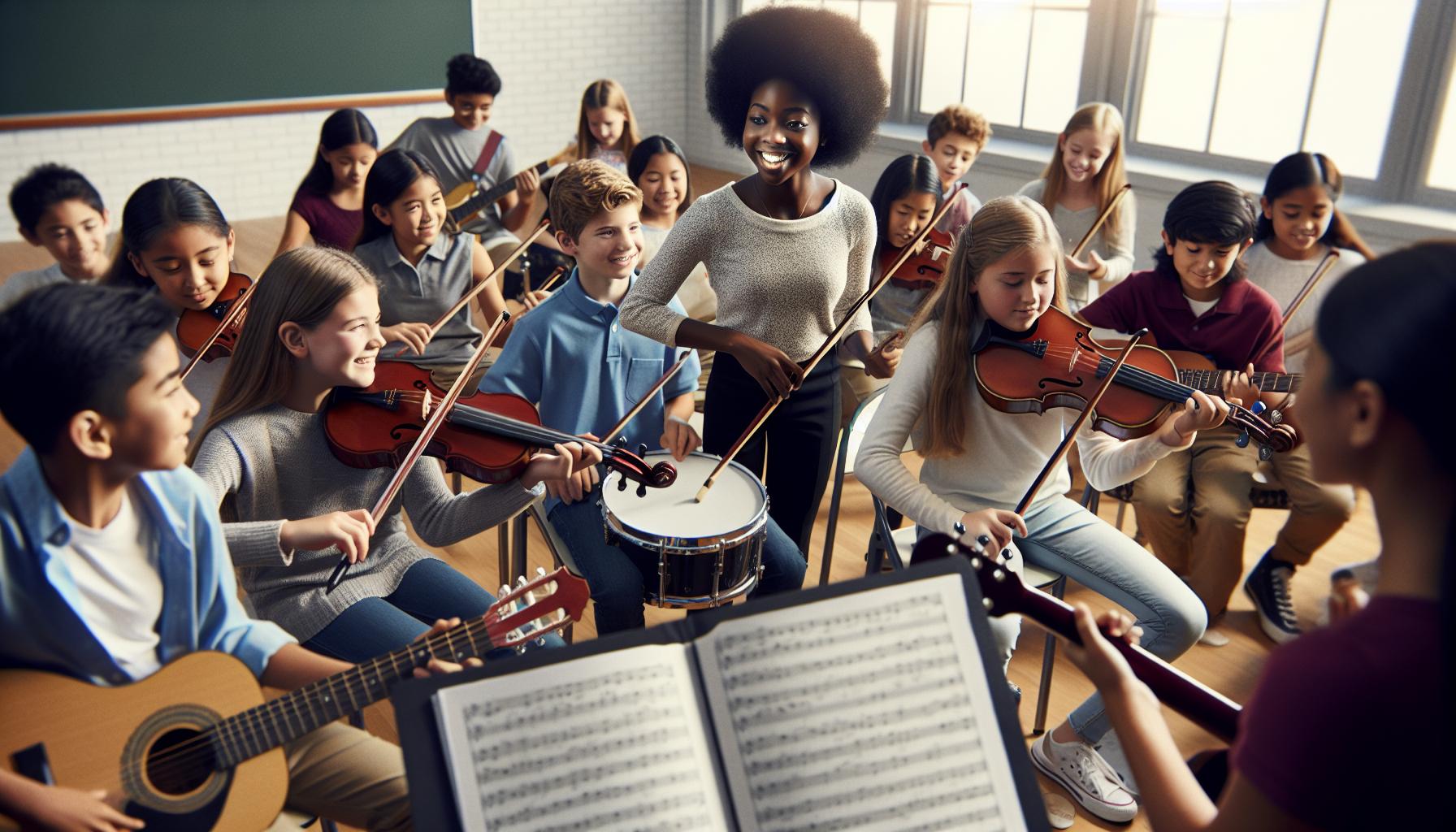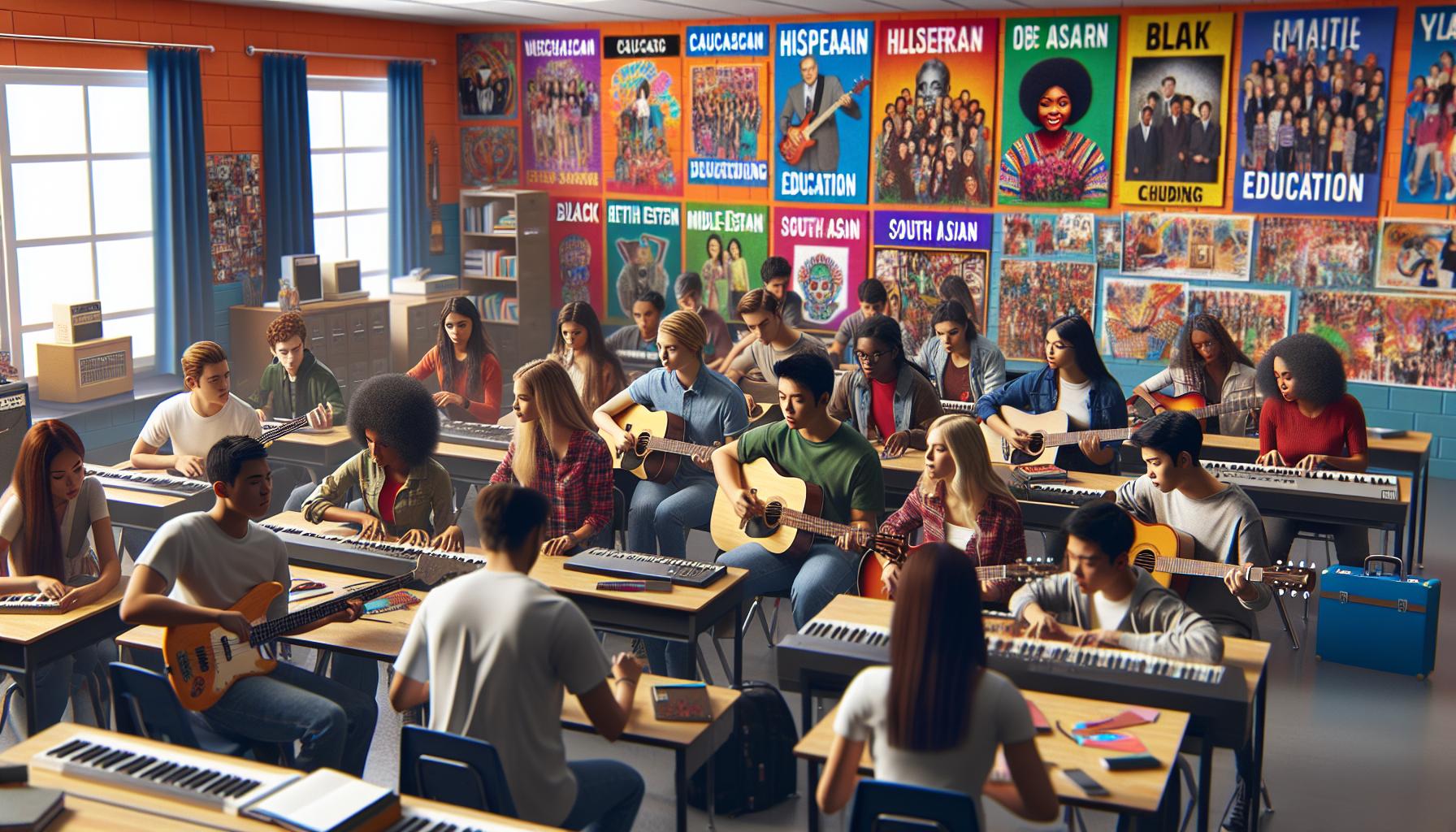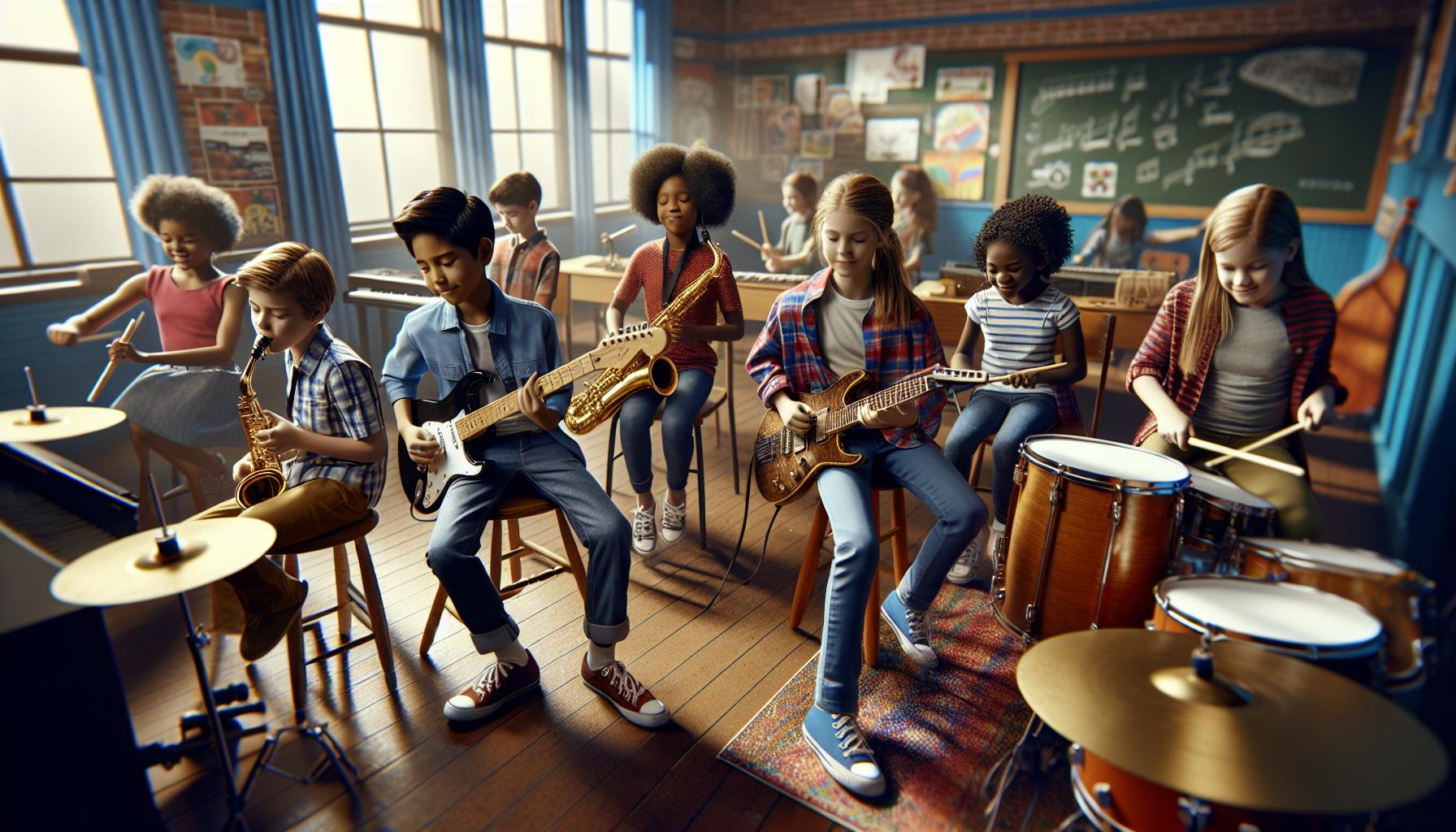Music isn’t just a source of entertainment; it’s a powerful tool for education. By integrating music into learning environments, educators unlock new pathways for creativity and critical thinking. This approach not only enhances cognitive skills but also fosters emotional development and social interaction among students.
As children engage with melodies and rhythms, they absorb complex concepts in a fun and memorable way. From improving language skills to boosting math understanding, music serves as a universal language that transcends barriers. The benefits of education through music extend beyond the classroom, shaping well-rounded individuals ready to tackle the challenges of the world.
Key Takeaways
- Music serves as a powerful educational tool that enhances creativity, critical thinking, and cognitive development in students.
- Integrating music into core subjects supports better comprehension, particularly in language and math, making complex concepts more accessible.
- Music education fosters emotional growth, helping students express themselves, build self-esteem, and develop empathy through diverse musical experiences.
- Group music activities enhance social skills, promoting teamwork, communication, and conflict resolution among students.
- Successful music programs, such as El Sistema and The Harmony Project, demonstrate significant improvements in academic performance and personal development.
- Challenges like inadequate funding and lack of professional development for educators hinder the effectiveness and accessibility of music education in schools.
Education Through Music
Education through music significantly impacts various aspects of student development. Music education fosters creativity, allowing students to express themselves freely through sound and rhythm. Critical thinking skills improve as students analyze musical pieces and understand the interplay between different elements in music. Cognitive skills also receive a boost when students engage with music, enhancing memory and pattern recognition.
Integrating music into core subjects like language and math aids comprehension. For example, music helps develop phonemic awareness, which is crucial for reading. Similarly, rhythm in music correlates with mathematical concepts, making numerical patterns easier to grasp.
Emotional development plays a vital role in music education. Students learn to express emotions through performance and composition, which builds self-esteem and confidence. Additionally, music creates opportunities for social interaction, as group activities, such as bands or choirs, encourage teamwork and communication.
Overall, the integration of music in educational settings creates a multifaceted learning environment. Students not only acquire academic skills but also develop emotionally and socially, preparing them to navigate real-world challenges effectively.
Benefits of Education Through Music

Education through music offers various benefits, including cognitive development, emotional growth, and enhancement of social skills. Each of these areas plays a crucial role in a student’s overall development.
Cognitive Development
Cognitive development through music education involves improved memory, attention, and problem-solving abilities. Engaging with musical activities strengthens neural pathways related to auditory processing and enhances pattern recognition. Studies show that students participating in music education achieve higher scores in standardized tests, particularly in math and reading. Music requires students to analyze structures and patterns, fostering critical thinking skills. Additionally, rhythm activities correlate with learning math concepts, enhancing numerical understanding.
Emotional Growth
Emotional growth in music education allows students to explore feelings and express themselves creatively. Participation in musical performances fosters self-expression, helping students articulate emotions through sound. This process builds self-esteem and confidence as students receive feedback from peers and instructors. Furthermore, exploring various genres and styles of music aids in developing empathy and emotional intelligence, as students learn to appreciate diverse cultural expressions. Music acts as a therapeutic outlet, aiding in mood regulation and stress relief.
Social Skills Enhancement
Social skills enhancement through music education promotes teamwork, communication, and collaboration among students. Group music activities, such as orchestras or choirs, require individuals to work towards a common goal, building camaraderie. These experiences cultivate leadership skills and encourage conflict resolution through mutual respect and understanding. Students learn to communicate non-verbally through musical cues and expressions, enhancing interpersonal skills. Music education also provides opportunities for diverse social interactions, broadening perspectives and fostering inclusivity.
Methods and Approaches

Education through music employs various methods and approaches that enhance learning experiences. These strategies integrate music into curricula, foster engagement, and facilitate skill development.
Integrative Teaching Methods
Integrative teaching methods combine music with diverse subjects, reinforcing learning through interdisciplinary connections. Examples include:
- Thematic Units: Teachers design units around central themes, incorporating music to complement subjects like history or science.
- Cross-Curricular Activities: Securing collaboration between music educators and classroom teachers enhances lessons, such as using songs to reinforce language concepts or math patterns.
- Hands-on Learning: Students engage with instruments and performance, transforming abstract ideas into tangible experiences that reinforce understanding.
Curriculum Design
Curriculum design focuses on structuring music education to support overall educational goals. Key strategies include:
- Standards Alignment: Aligning music curriculum with national and state educational standards ensures goals for learning outcomes are met.
- Skill Progressions: Developing a clear progression of skills guides students from basic concepts to advanced techniques, enhancing mastery over time.
- Diverse Learning Styles: Incorporating various teaching modalities, including auditory, visual, and kinesthetic, accommodates different learning styles and promotes inclusivity.
These methods and approaches illustrate the effective integration of music into educational practices, enhancing cognitive, emotional, and social development for students.
Case Studies and Success Stories

Numerous case studies and success stories demonstrate the positive impact of music education in various educational settings.
Case Study 1: El Sistema
El Sistema, a Venezuelan music education program, illustrates significant achievements in social change through music. By providing free orchestral training to children in underserved communities, it emphasizes teamwork and discipline. Participants exhibit improved academic performance and increased self-esteem, with many going on to attend prestigious music conservatories.
Case Study 2: The Harmony Project
The Harmony Project in Los Angeles focuses on delivering music education to underserved youth. This program reports that students involved in music training show enhanced academic performance, particularly in mathematics and literacy. The project emphasizes community engagement, resulting in increased social cohesion among participants.
Case Study 3: Music and Brain Development Research
Research conducted by neuroscientists at the University of California, Irvine, links music education to improved cognitive skills in children. The study revealed that students engaged in music programs score higher on standardized tests, particularly in math and reading. These students also demonstrate improved working memory and attention spans compared to peers without music education.
Success Story: A School District’s Transformation
A school district in Texas implemented a comprehensive music education program across all grade levels. Results showed a 20% increase in standardized test scores for students involved in the program. Teachers noted marked improvements in student engagement and collaboration skills, as music activities fostered a collaborative learning environment.
Success Story: Music Therapy in Special Education
A program integrating music therapy into special education has shown remarkable results. Students with autism spectrum disorder engaged in musical activities demonstrated enhanced social interactions and communication skills. Teachers observed significant reductions in behavioral issues, creating a more harmonious classroom environment.
These case studies and success stories highlight the transformative power of music education, from personal development to academic success.
Challenges in Implementing Music Education
Implementing music education presents various challenges that can hinder its effectiveness in schools. Two major areas of concern are funding and resource allocation, along with training and professional development for educators.
Funding and Resource Allocation
Funding for music education often remains inadequate, limiting access to instruments, materials, and program development. Schools typically prioritize core subjects, which results in reduced budgets for music programs. According to the National Association for Music Education, budgets for music programs in public schools decreased by 25% over the past decade. The lack of funding restricts opportunities for students to participate in extracurricular music activities and limits the scope of music education curricula. Additionally, inequitable resource distribution can lead to significant disparities between schools in affluent and underprivileged areas, contributing to unequal access to quality music education for students.
Training and Professional Development
Training and professional development for music educators often fall short, impacting the quality of instruction. Many teachers lack formal training in music education, relying on limited experience or personal interest. The Music Educators National Conference emphasizes the importance of ongoing professional development to enhance teaching practices. Without proper training, educators may struggle to effectively engage students or integrate music education with other subjects. Additionally, professional development opportunities for music teachers remain scarce, further exacerbating challenges in delivering high-quality music education. Investing in comprehensive training programs equips educators with the necessary skills to inspire students and foster a vibrant learning environment.
Education through music offers a wealth of benefits that extend far beyond the classroom. It nurtures creativity and enhances cognitive skills while promoting emotional growth and social interaction. By integrating music into educational practices, students not only develop a deeper understanding of academic subjects but also gain vital life skills.
Investing in music education is crucial for fostering well-rounded individuals who can navigate the complexities of the real world. Addressing funding challenges and providing adequate training for educators will ensure that all students have access to the transformative power of music. Embracing music education is a step toward creating a brighter future for students everywhere.